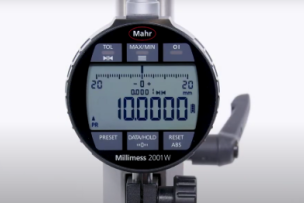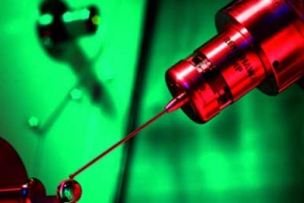Headquartered in Aurora, IL, Mitutoyo America Corporation is the world's largest provider of measurement and inspection solutions offering the most complete selection of machines, sensors, systems and services with a line encompassing CMM (coordinate measuring machines), vision, form and finish measuring machines, as well as precision tools and instruments, and metrology data management software. Mitutoyo's nationwide network of Metrology Centers and support operations provides application, calibration, service, repair and educational programs to ensure that our 8,500+ metrology products will deliver measurement solutions for our customers throughout their lifetime.
This technical bulletin was developed to help owners of measuring equipment reduce risk and optimize their expenses in calibration. All measuring equipment requires calibration; however, there are many different types of calibrations which can lead to false assumptions and missed expectations. All too often, the end-user is either wasting money on unnecessary calibration, or worse, they are exposing their organization to unforeseen quality risks. This is especially true when contracting external calibration services. This bulletin provides recommended language when contracting calibration services and a 10-point checklist to follow.
Language when Contracting Calibration Services
When contracting calibration services, it is critical to be clear about your needs and expectations. Many customers require ISO/IEC 17025 accredited calibrations, but simply requesting an accredited calibration is not enough. It is recommended that requests for calibration include much more clarity on what is needed, such as:
Calibrate measuring equipment. ISO/IEC 17025 accredited calibration certificate required. Report as-found and as-left readings following method recommended by manufacturer or from a nationally recognized standard. Assess and report conformity to published manufacturer specifications using a simple acceptance decision rule with a test uncertainty ratio, TUR ≥ 4. Include calibration due date on certificate using interval of (X) months. Perform cleaning, service, and accuracy adjustments as needed to bring unit into tolerance.
The reasons for this language are discussed later, but here are some important notes and clarifications:
- The last sentence can be changed depending on the equipment being calibrated. For example, for a set of gage blocks, say “Replace and calibrate any missing or out-of-tolerance blocks.”
- Asking the calibration service provider to include the calibration due date on the certificate is optional. If the due date is desired, then the customer must agree on the calibration interval with the calibration provider.
- A TUR ≥ 4 is often not possible or needed. By putting this requirement in calibration requests, the customer is better protected and forces the supplier to disclose their capability. A lower TUR is often acceptable, but never accept TUR < 1. A TUR under one means the calibration capability is worse than the tolerance being checked.
10-Point Checklist for Contracting Calibration Services
1. Use an accredited laboratory. There are many reasons to use a calibration laboratory accredited to ISO/IEC 17025, one of which is that accredited calibrations are required in many industries. Accredited labs must submit to regular technical audits, which provides greater confidence in the capability of the lab. Accredited labs also have publicly available “scopes of accreditation” which provide for transparency of the capability of the lab. Finally, the best way to ensure traceability in calibration is by using accredited labs.
2. Check if capability is acceptable. The scope of accreditation lists what the lab is accredited to calibrate, over what range, and their calibration measurement capability, or CMC. This provides an easy way to assess how good a lab is for a specific calibration. The CMC represents the best measurement uncertainty the lab can report.
3. Define your tolerance limits. Most dimensional measuring equipment is calibrated to the manufacturer-specified tolerance limits, but the end-user is free to define their own tolerance limits. The tolerance limits can then be compared to the CMC of the lab to determine the Test Uncertainty Ratio, or TUR. For more information on this topic, see technical bulletin “Decision Rules, TAR, and TUR” (bulletin EDU-15005A).
4. Statement of conformity (pass/fail). One of the most important purposes of calibration is to determine conformity to specification; however, making such a statement is optional in accredited calibrations. The solution is to simply request the calibration lab to assess and report conformity. The measured values, the tolerances, the uncertainty, and some sort of PASS/FAIL statement, with a defined decision rule, is needed.
5. Define tests and methods. ISO/IEC 17025 recommends, but does not require, that calibrations are done following methods from published standards or as specified by the manufacturer of the equipment. Be very careful with laboratory-developed methods, as their validity is often questionable. Discounted calibrations often mean that less rigorous methods are being used, which increases the risk to the customer.
6. Request as-found results. The as-found, or as-received, calibration results may be the most important part of calibration, as they are used to determine the stability of measuring equipment over time, which is used to adjust the calibration interval. For many calibration providers, as-found results are optional. Be sure to request them.
7. Adjustments and maintenance. For many customers, the concept of calibration includes correcting, setting, or adjusting the measuring equipment back to within tolerances. Unfortunately, the international definition of calibration does not include adjustments or maintenance. If the expectation from calibration is to adjust as needed, then this must be specifically requested, and the ability of the supplier to do this should be confirmed in advance.
8. Define your calibration interval. Some customers do not realize that they are ultimately responsible for the calibration interval. While many customers use a 1-year interval, the intervals should be lengthened or shortened based on the historical performance of the measuring equipment and taking risk into consideration. For example, in precision manufacturing in harsh environments, a digital caliper may need a three-month interval; however, that same caliper used for low accuracy wood working may not need to get recalibrated for 25 years. For accredited calibrations, the calibration due date can only be provided on the certificate with customer agreement.
9. Request accredited certificate. There is a subtle yet important difference between using an accredited calibration provider and receiving an accredited calibration certificate. Some accredited labs charge extra for an accredited certificate. Be careful here – a non-accredited certificate from an accredited lab is the same as using a calibration provider that is not accredited. To avoid this confusion, be certain to request an accredited calibration certificate.
10. Rules for calibration label. The purpose of calibration labels is to allow the user of the measuring equipment to readily identify the calibration status. However, there is limited guidance or rules on what needs to be done in calibration for a new calibration label to be applied. While organizations may have their own internal rules, if those rules are not communicated to the calibration provider, then a new calibration label may be applied with different expectations. This can be a big problem. For example, calibration labels are routinely applied in cases where the measuring equipment has not been compared to specifications. If the idea of non-conforming equipment still receiving a new calibration label is concerning, then be certain to define the expectations.
Previously Featured on Mitutoyo's website.









Talk to Us!
I am looking for a calibration services provider with competitive pricing, quality calibration and calibration turnaround in 10 business days or less.
I work for Sulzer Pump Services (US) Inc in Piedmont SC.
I can be reached at 864-846-9450
6Leave a reply
Your email address will not be published. Required fields are marked *